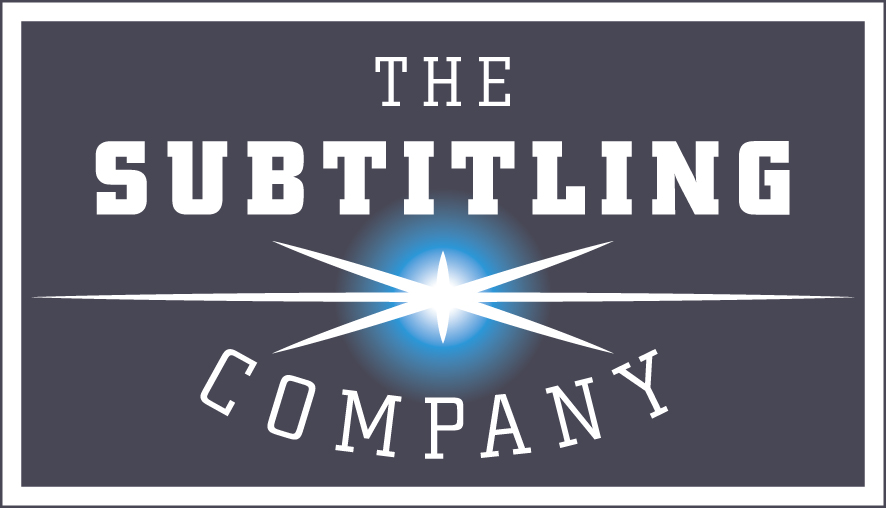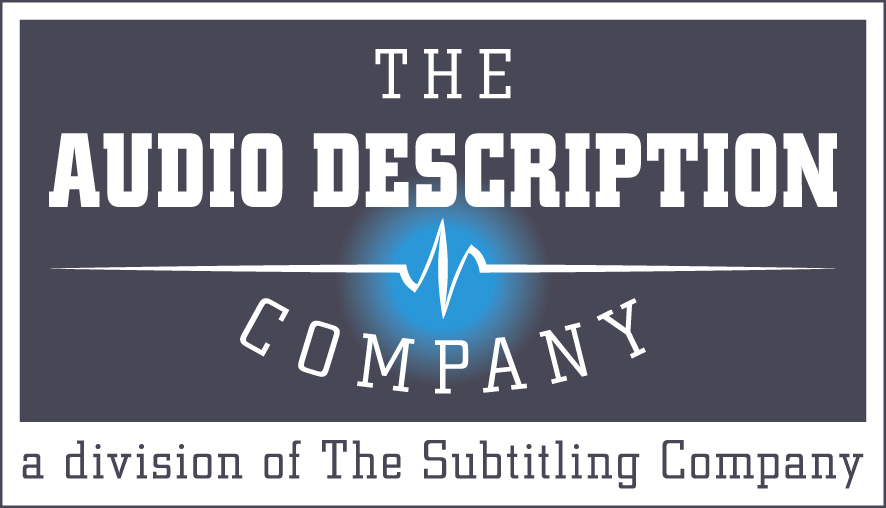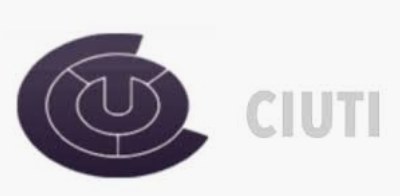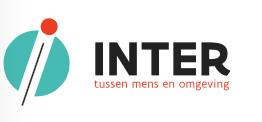Expertisecentrum Toegankelijke Media & Cultuur
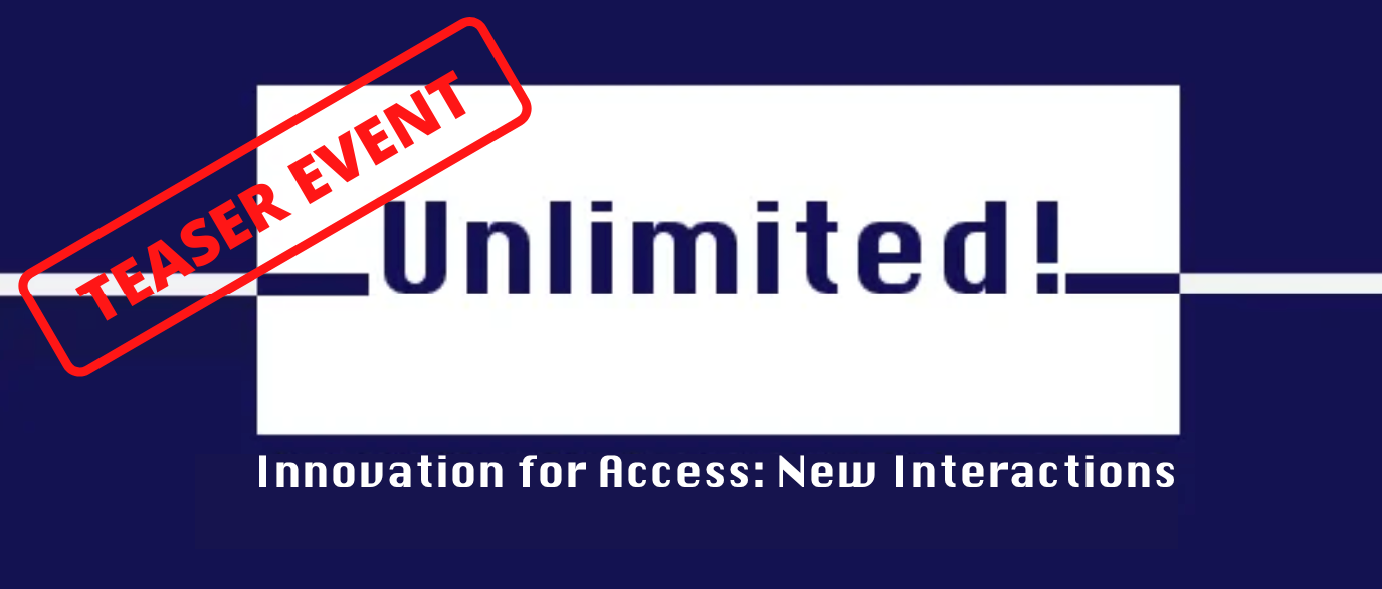
Unlimited!3 Innovation for Access: New Interactions - Online Teaser Event
In anticipation of the face-to-face conference Unlimited! 3 which will take place on 11 February 2022, the TricS research group and the OPEN Expertise Centre welcomed over 50 participants to a free online teaser event on 2 July 2021. A total of 9 speakers joined us from over 6 different countries. The themes they covered not only demonstrated that live accessibility is a vibrant and creative domain, but also that accessibility covers a wide range of topics that often move beyond the translational aspect of accessibility alone. Our keynote speaker Dr. Joselia Neves gave us a sneak preview of the topic of ‘intersensory translation’ and its role in moving from a focus on dis-ability to a focus on ability and a form of multiformatting that can address various types of users. The topic will be taken up again and explored at greater length at the face-to-face conference in 2022. The keynote speech was followed by an additional 8 speakers who presented and illustrated innovative approaches to various types of media access services, all of which embodied in some way the approach put forward by the keynote speaker. Keywords such as creativity, collaboration, multimodality, interdisciplinarity and multisensoriality ran as a red thread through the speakers’ presentations.
The teaser event certainly whet our appetite for the face-to-face edition on 11 February 2022. Check out the Unlimited! 3 website for more information.
Programme
09.15 CET Welcome address
09.30 – 10.00 Keynote speech: Dr. Joselia Neves Intersensory Translation creating achievement spaces “for more”
10.00 – 11.00 Panel 1: Access services
Integrated Accessibility of Tangible and Intangible Cultural Resources. The "SAC for all" project. (Gian Maria Greco)
INCLUSIVE THEATRE-MAKING: CONCEPTS AND PRACTICES (Elena Di Giovanni)
Making live events accessible through respeaking: A path of challenge and innovation (Zoe Moores)
IMPACT Erasmus+ project: Accessibility training for the new digital world (Estella Oncis)
11.00– 11.30 Coffee break
11.30 – 12.30 Panel 2: Subtitling
A CREACTIVE: Haute couture subtitling (Èlia Sala Robert)
From Accessibility to an Aesthetics of Access: Rethinking Captioning on Stage (Maria Wunsche)
An engagement-based approach to media access training and practice: The case of live events (Pablo Romero Fresco)
Quality in Automatic Live Subtitling: A First Approach to its Strengths and Weaknesses (Nazareth Fresno)
12.30-13.00 Closing address - Aline Remael & Nina Reviers
Abstracts
Keynote speech: Dr. Joselia Neves
Intersensory Translation creating achievement spaces “for more”
In recent years scholars have been finding it difficult to fit the full scope of accessibility services within the traditional notion of audiovisual translation. For this reason, proposals for the development of a new discipline – Media Accessibility – have surfaced (Greco 2016, 2018; Romero-Fresco 2017, 2018; Remael and Reviers 2019) but even then, not all accessibility services seem to be fully captured. Another issue that continues to be questioned is the notion of ‘for all’ or even that of ‘universal design’, in the growing understanding that no size fits all. Finally, the understanding that accessibility is not necessarily connected to disability surfaces every time the topic is addressed.
In this presentation we will be taking up these issues anew, in an effort to understand how accessibility services may continue to be addressed within Translation Studies. This will be done by proposing that accessibility services be seen from the perspective of reception, with a focus on the senses, to arrive at the notion of ‘achievement spaces’, the ideal conditions in which each person can engage with the world around them. This user-sensitive ability-based approach is believed to explain how any accessibility service can be seen as a form of translation, i.e. a form of mediation that enhances the natural abilities that every person has, allowing them to do what they want to do and to simply be who they are. In the light of this approach we will address accessibility solutions beyond traditional audiovisual translation contexts to think about them in other contexts.
https://www.hbku.edu.qa/en/chss/staff/jos%C3%A9lia-neves
Integrated Accessibility of Tangible and Intangible Cultural Resources. The "SAC for all" project. (Gian Maria Greco - University of Warsaw, Poland)
In 2010, using funds from the European Regional Development Fund, the Apulia Region (Italy) launched the programme “Sistemi Ambientali e Culturali” (Environmental and Cultural Systems, henceforth ECS). ECS are “aggregations of environmental and cultural resources of the territory, adequately organized, networked and managed on the basis of their capacity to support integrated promotion programs, sustainable development and inter-institutional cooperation”. Each ECS is developed through a unified strategy of actions.
The ECS Porta d’Oriente is the only ECS with accessibility at the core of its strategy of actions. In the talk, I will briefly present the work realised in order to implement this transversal action, as well as the rationale behind it. Adopting a universalist, user-centred, proactive, and poietic approach, a series of solutions was designed, such as propriocentric descriptive guides, audio descriptions, memory boxes, discovery trails, tactile reproductions, tactile interactive games, and videos with voice over, Italian sign language and subtitles; all in Italian, English, and French. The work was carried out through the ad-hoc established Experimental Centre for Accessibility and a multidisciplinary team, which included experts and end-users.
https://uw.academia.edu/GianMariaGreco
INCLUSIVE THEATRE-MAKING: CONCEPTS AND PRACTICES (Elena Di Giovanni – Università di Macerata, Italy)
My presentation will focus on the notion of inclusive theatre-making, from a theoretical and empirical standpoint. Inspired by some of the more prominent trends in research on media accessibility from a translation studies perspective, which seem to have marked a natural move from the very concept of ‘accessibility’ to that of ‘inclusion’ (participatory accessibility, Di Giovanni 2018; accessible filmmaking, Romero Fresco, 2019; accessibility as a human right, Greco 2019), this presentation proposes a paradigmatic shift from the somewhat privative notion of accessibility to the more comprehensive and equalitarian concept of inclusion.
Inclusive theatres should aim to highlight as many diverse abilities as possible, and bring them all together in the design, creation, staging and enjoying of different kinds of performances. Where accessibility is centred on the tools and strategies to give people access, inclusion is rather focused on the people themselves.
Drawing from inclusive design theory (Nussbaumer, 2012) and from drama studies (Helm, 2016), the presentation aims to showcase and discuss a set of key notions to be further defined in future research, but also to be applied to the analysis of instances of inclusive theatre-making.
Sources
Di Giovanni, Elena 2018b. Participatory Accessibility: Creating Audio Description with Blind and Non-blind Children, in Journal of Audiovisual Translation 1, pp. 155-169. https://www.jatjournal.org/index.php/jat/article/view/50/9 (10.01.2021).
Greco, G. M. 2019. Accessibility Studies: Abuses, Misuses and the Method of Poietic Design, in Stephanidis C. (ed.), HCII 2019 – Lecture Notes on Computer Science 11786, pp. 15–27. Disponibile online: https://link.springer.com/chapter/10.1007%2F978-3-030-30033-3_2 (gennaio 2021).
Helm, C. 2016. Audience as Performer. The Changing Role of Theatre Audiences in the Twenty-First Century, Londra/New York: Routledge.
Nussbaumer, L. 2012. Inclusive Design. A Universal Need, New York, Fairchild Books.
Romero Fresco, P. 2019. Accessible Filmmaking: Integrating Translation and Accessibility into the Filmmaking Process, Londra/New York: Routledge.
Making live events accessible through respeaking: A path of challenge and innovation (Zoe Moores – University of Surrey, United Kingdom)
A path of challenge and innovation
Although respeaking is a growing area within audiovisual translation internationally, in the UK its industry use has mostly been limited to television, in part due to certain misconceptions and misapprehensions surrounding its production and use. Very good access at live events is offered through speech-to-text transcription so, before this study, little research had been done on introducing respeaking within this setting. However, since no regulatory body monitors access at events, the breadth and frequency of this access is not guaranteed. For this reason, I wanted to explore whether respeaking could be used as an additional form of access. It is this process, along with the participatory model for access that resulted, that I present today, a model which develops the role of accessibility manager (Remael et al, 2019) in the specific context of events made accessible through respeaking.
Even in familiar settings, respeaking presents many challenges. Add to these the inherent dynamism and diversity of events, which vary in content, set-up, location and audience, and the potential complexity of introducing respeaking into this new setting becomes clear. Three event types, presentations, talks and tours, were selected with the hope that the resulting guidelines would be applicable to a range of settings. The expertise of users and providers was sought from the outset so that the expectations of both could be met.
For respeaking to be fully embedded, and the event as a whole to be as accessible and inclusive as possible, it became clear that new approaches were required from all parties. The real-time access and technical requirements specific to respeaking meant that everyone involved needed to be familiar and engaged with how this access was provided. Further, the role of accessibility manager was best performed by a combination of people, recognising the expertise and experience brought by all involved.
https://www.surrey.ac.uk/people/zoe-moores
IMPACT Erasmus+ project. Accessibility training for the new digital world. (Estella Oncis – Universitàt Autonòma de Barcelona, Spain)
Society attitudes towards the consumption of audiovisual content have been changing since the introduction of the Internet in our lives. The weight of the audiovisual content available online and, consequently, the space occupied by digital platforms have been accentuated with the development of networks, infrastructures, technology and smart devices connected to the Internet. Compared to other public spaces, the Internet provides users an increasing number of services for consuming and interacting with digital content. Still, even if online and live streaming is a wide known service, live accessibility still remains a major challenge.
The need for accessibility when accessing an ICT product and consuming online content has risen since the endorsement of the Convention on the Rights of Persons with Disabilities (UNCRPD) by European Directives. To this aim the publication of the European Standard on Accessibility of ICT products and services in public procurement (EN301 549), urge all Member States to develop common strategies to ensure that people with a disability can use digitally provided information and public services in Europe. The EN301 549 EU Standard aims at enabling disabled users to access to digital content and products. Still the lack of official training poses a major challenge for facing the accessibility levels required by law.
The focus of this presentation will be to present the new Erasmus+ project IMPACT (Inclusive Method based on the Perception of Accessibility and Compliance Testing), which aims at defining the skills and competences that an accessibility expert should acquire and master. This will allow at designing, testing and certifying a competence–based curriculum of the new professional profile(s) for the implementation of the EN301 549 Accessibility Standard.
CREACTIVE: Haute couture subtitling (Èlia Sala Robert – Universitat Pompeu Fabra Barcelona, Spain)
Deaf audiences are heterogeneous. It is possible to draw different profiles depending on the location of the alteration within the ear, the degree of hearing loss caused by this alteration and the onset of the hearing loss. The location of the alteration may produce an alteration in the hearing quantity or may affect the ability to hear sounds, besides reducing the quality of the sound heard. The degrees of hearing loss vary from mild to profound. The former directly affects clarity and produces some difficulty following speech in noisy situations, although the brain still receives and identifies sounds; while the latter makes people unable to hear any speech at all, and they need to rely on visual cues (signing or lip-reading) to maintain communication. The moment when the hearing loss appears is of special importance. Particularly early hearing loss has an impact on the cognitive, communicative, linguistic and social development of the child.
Therefore, conventional SDH alone seems insufficient to cover the needs of ALL those who are unable to hear.
Creactive subtitles originated from the urge to provide an effective subtitling code according to the capabilities of deaf children, which differ from those of deaf adults, due to their age, maturity, language appreciation and reading skills. Creactive subtitles are a completely newly designed subtitling code targeted at younger (deaf) audiences. They are designed ad hoc and present extralinguistic information visually, by means of comics’ language conventions. They are an innovative proposal that changes the manner subtitles have been commonly conceived, since they are tailor-made for the particular needs derived from deaf children’s sensory disability. Despite they respect the technicalities of conventional SDH, such as time-coding, character restriction or time limitations, creactive subtitles break the rest of the norms of subtitling.
https://www.upf.edu/web/traduccio/entry/-/-/40024/adscripcion/elia-sala
From Accessibility to an Aesthetics of Access: Rethinking Captioning on Stage (Maria Wunsche – Universität Hildesheim, Germany)
Access services such as theatre captioning are provided for the audience to understand the storyline of a play. These intersemiotic translations are usually added after the performance has been developed and do not or only slightly interfere with the live event. It can be argued, however, that a mere understanding of a storyline does not equal full access to said performance, since there is not only one fixed meaning of a live performance and it is not only to be found in the dialogue. It is thus essential to think access not only in a pragmatic and linguistic, but furthermore in an artistic way.
By integrating access services into the artistic process, an Aesthetics of Access (cf. Sealey/Lynch 2012; Ugarte Chacón 2015) can create new aesthetic possibilities and new ways of working together. It also puts the possibilities of existing technology to the test. My presentation will show an example of how an Aesthetics of Access was put into practice in the European project ImPArt in order to create an adaptation of Antoine de Saint Exupéry’s “The Little Prince”(cf. https://un-label.eu/en/project/the-little-prince/). It will focus particularly on the integrated captioning on stage and draw a comparison to “regular” theatre captioning as was described above: Since the captions were part of the set design and created scene by scene, not only the technical requirements and required competencies from the captioner, but also the working process differed significantly from theatre captioning done in other contexts.
From engagement to creativity in media accessibility: The case of live events (Pablo Romero Fresco)
Arguably, the current and prevailing approach to media access training and practice is often based on comprehension and focuses on compensating for missing content. In the case of SDH, the aim is often to provide viewers with hearing loss with the information that is available to hearing viewers. Applied to hockey matches in Canada, the current approach has resulted in the provision of very fast subtitles for play-by-play commentary that is forcing viewers to read descriptions of on-screen actions (“player x passes the buck to player y”) without giving them time to look at the images. Drawing on recent developments in media accessibility and within the framework of a research project funded by the Canadian government to assess live subtitling quality on TV sports, this presentation aims to outline and illustrate an alternative way to approach media accessibility training and practice. This new approach is based on facilitating engagement with the content, taking the viewers as a reference and focusing not on their impairments but on both their abilities and disabilities. This results in the elimination of play-by-play subtitles to enable viewers with hearing loss to have a more visual engagement with the game, thus making the most of their ability to obtain information from the images. This engagement-based approach, ideally applied during the production process and in collaboration with the creative team, often results in creative media accessibility practices. Although these are normally applied to pre-recorded content, there is an increasing number of visual artists who are now putting together exhibitions where this approach is pushed further, and where media accessibility becomes an artistic medium in itself. This presentation will also show some of this work and briefly reflect on the impact that it can have on current research, training and practice in media accessibility.
Pablo Romero Fresco is Ramón y Cajal researcher at Universidade de Vigo (Spain) and Honorary Professor of Translation and Filmmaking at the University of Roehampton (London, UK). He is the author of the books Subtitling through Speech Recognition: Respeaking (Routledge) and Accessible Filmmaking: Integrating translation and accessibility into the filmmaking process (Routledge). He is on the editorial board of the Journal of Audiovisual Translation (JAT) and is the leader of the international research centre GALMA (Galician Observatory for Media Access), for which he is currently coordinating several international projects on media accessibility and accessible filmmaking, ILSA: Interlingual Live Subtitling for Access, funded by the EU Commission. Pablo is also a filmmaker. His first documentary, Joining the Dots (2012), was screened during the 69th Venice Film Festival and was used by Netflix as well as film schools around Europe to raise awareness about audiodescription.
Quality in Automatic Live Subtitling: A First Approach to its Strengths and Weaknesses (Nazareth Fresno – University of Texas, USA and Pablo Romero Fresco – University of Roehampton, UK and Universidade de Vigo, Spain)
Over the past decades, real-time subtitling has allowed all viewers to access live broadcasts on television. Since its introduction in the early 80s, live subtitling has traditionally been produced through stenography or respeaking technologies. In the first case, stenocaptioners listen to the speakers on television and use a special keyboard to type their subtitles. In turn, respeakers dictate the message to a speech recognition software before the subtitles are delivered to the audience. In both cases, live subtitling becomes a human-driven process since respeakers and stenocaptioners are responsible for the entire subtitling process. Nevertheless, the ever-improving technological developments have recently brought the use of automatic speech recognition (ASR) software to live subtitling. In the US, some broadcasters in small markets use ASR to caption local news and online refeeds of previously televised programs. Additionally, the Spanish public broadcaster TVE is now conducting the first tests with fully automated subtitles, also for local news in specific areas. Arguably, ASR offers interesting possibilities but it remains to be determined if the technology currently available delivers good quality subtitles.
Cueing on existing subtitling quality studies, this presentation will discuss the main findings of a research project that explored the quality of live subtitles produced by ASR. A total of 60 minutes of televised broadcasts belonging to news programs, chat shows and sports were subtitled using two ASR engines. The quality of the resulting subtitles was assessed using the NER model, which provided data on their accuracy rate, speed and subtitling errors. While the main findings of this project point at accuracy rates below those found in prior studies conducted on human-produced subtitles, the results were better for structured, well-delivered and sequential speeches. However, the ASR engines struggled to provide acceptable subtitles for samples featuring spontaneous or unstructured messages.
https://utrgv.academia.edu/NazaretFresno
Sponsors
Gold Sponsor
The Audio Description Company, a division of The Subtitling Company.
Supporting organizations
Conférence Internationale Permanente d'Instituts Universitaires de Traducteurs et Interprètes (CIUTI)
The department of Applied Linguistics, Translators and Interpreters of the University of Antwerp.
University of Antwerp.
Accessibility Advisors
Hoorcoach Regina Bijl
Flemish expertise centre Inter .

